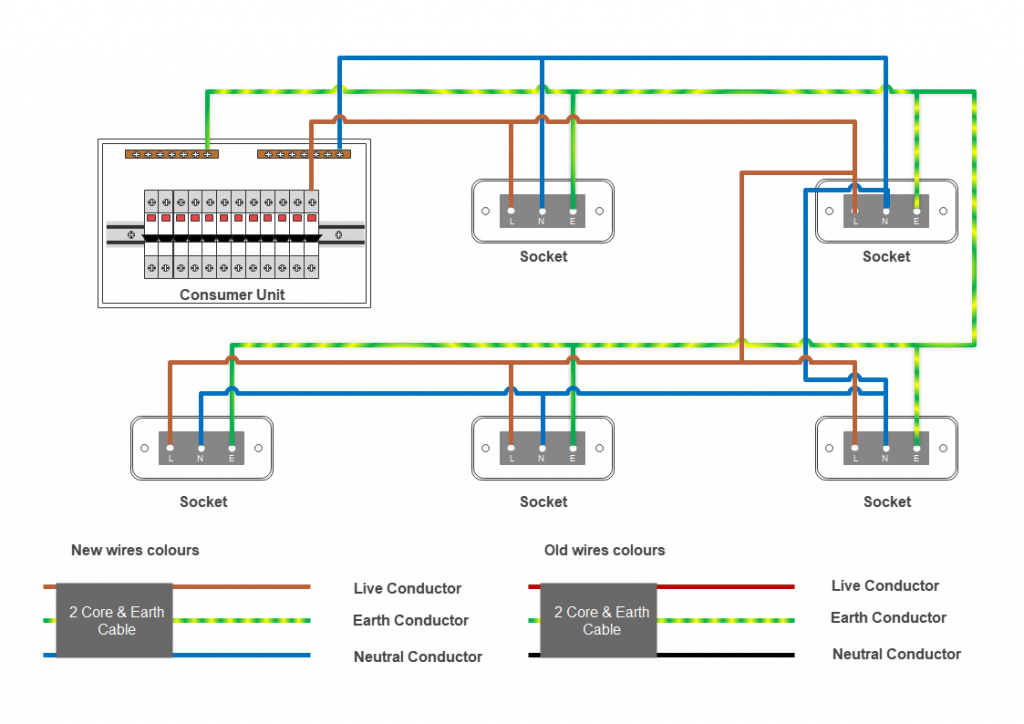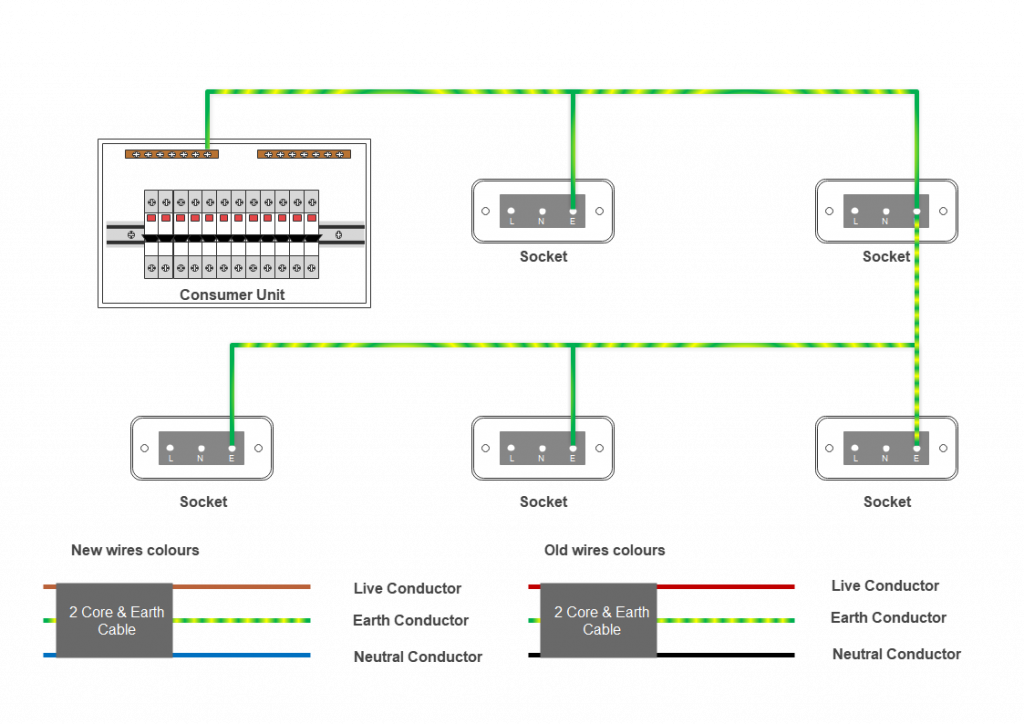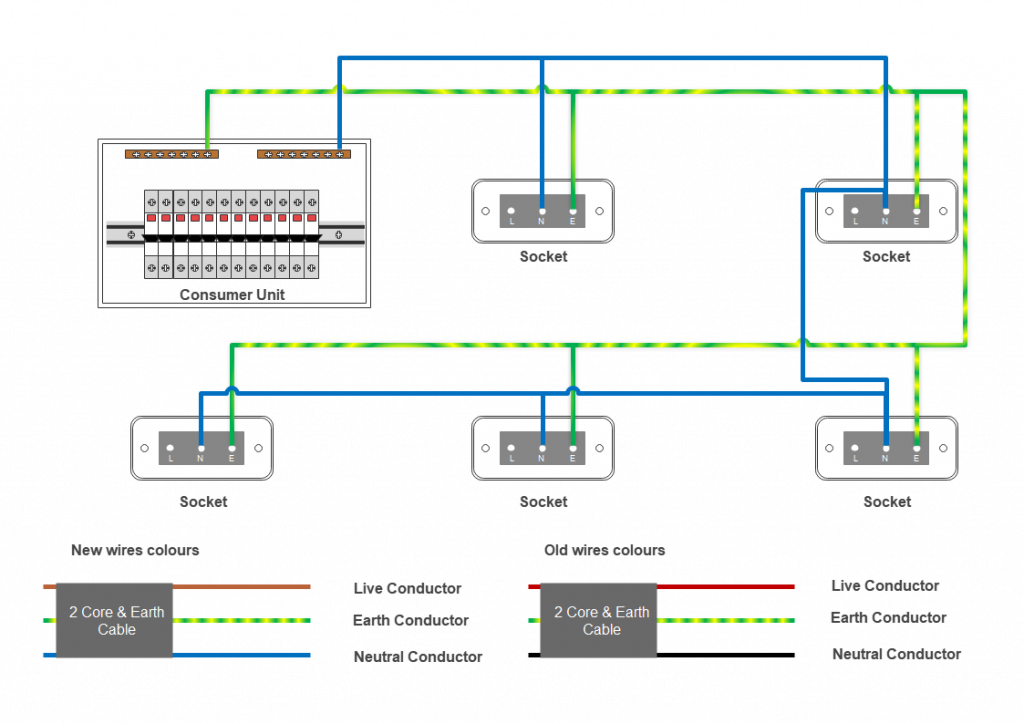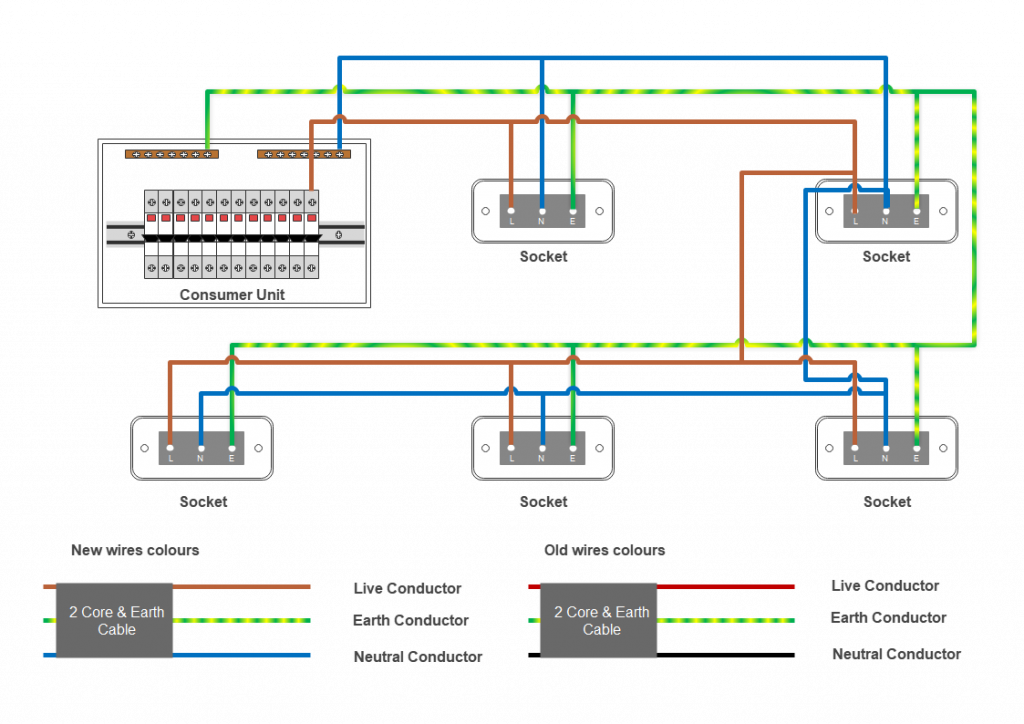A radial circuit is a type of electrical circuit where cables leave the consumer unit, where it connects to an overcurrent protective device, such as an MCB, RCBO, or rewireable fuse, and then run directly to the point of use without returning to the consumer unit. However, it’s essential to consider additional protection, such as an RCD, as specified in Regulation 411.3.3 and Regulations 522.6.202 and 203 in Wiring Regs BS 7671. Keep in mind that the fuse, breaker size, and cable size must be selected according to the load or equipment using that circuit.

Table of Contents
What type of circuits could be installed as radial circuits?
Radial circuits, which supply electricity through a cable from the fuse box to the point of use, can serve various purposes, including powering sockets, lighting points, immersion heaters, boilers, showers, cookers, and more.
Can I install a socket as radial circuit?
The route you take the cables to doesn’t affect the electricity flow, so a radial socket circuit can be installed based on the required load or purpose of usage. However, it’s essential to be judicious with the number of sockets. There is an old regulation stating that a radial socket circuit should cover a 50 square meter floor area. Therefore, the socket radial circuit should be installed using 2.5mm cable with a 20A circuit breaker.
What materials are required for a radial socket circuit?
To install a radial socket circuit, you will need:
- 2.5mm flat twin & earth cable.
- 20A circuit breaker.
- Yellow/Green earth sleeving.
- The required number of sockets and back boxes.
- Cable entry grommets, screws, and rawlplugs.
How to install a radial socket circuit?
In a radial circuit, one cable leg leaves the consumer unit and runs to the point of use without returning to the consumer unit. Installing a radial socket circuit is straightforward. You can use either single-core or flat twin and earth cable with 2.5mm wires like Brown (L), Blue (N), and Yellow/Green (E).
For instance, when using flat twin & earth cable, run one leg from the consumer unit to the first socket, then loop between the required number of sockets. The cable loop ends at the last socket and does not return to the consumer unit. If you’re using single-core cable, do the same but ensure that you run three wires: Brown (L), Blue (N), and Yellow/Green (E).
How to terminate the radial socket circuit?
The connections are the same as in a ring main or ring circuit, but you will have one Live (L), one Neutral (N), and one Earth (E) wire in the consumer unit and in each socket.
Step 1:
For flat twin and earth wire, the bare conductor is the earth wire (E), which must be protected with color-coded yellow and green earth sleeving. At the consumer unit, terminate the earth wires into the earth bar, and do the same at each socket where the terminal is marked (E) or color-coded yellow/green.

Step 2:
The Neutral (N) wire should be terminated at the neutral bar in the consumer unit, and do the same at each socket where the terminal is marked (N) or color-coded blue. If a 20A RCBO is used as a circuit breaker in the consumer unit, then the Neutral (N) wire must be terminated at the marked neutral terminal on the RCBO, and the RCBO’s neutral wire should be terminated at the neutral bar in the consumer unit to complete the circuit.

Step 3:
For the final step, the Live (L) wire should be terminated at the outgoing terminal of the 20A circuit breaker (MCB), and do the same termination at the socket, typically marked as (L) and color-coded brown.

What are the benefits with the radial circuit?
In a radial circuit, electricity flows in one direction through the cable and terminates at the load or the last socket (in the case of a socket circuit). However, if there is a break in the cable, electrical current will not flow beyond the break, and the load item will not function until the break is fixed, which is different from ring circuits. Additionally, in a radial circuit, a cable break is easily noticeable, unlike in ring circuits which may go unnoticed for many years.
Related post:
Resources:

